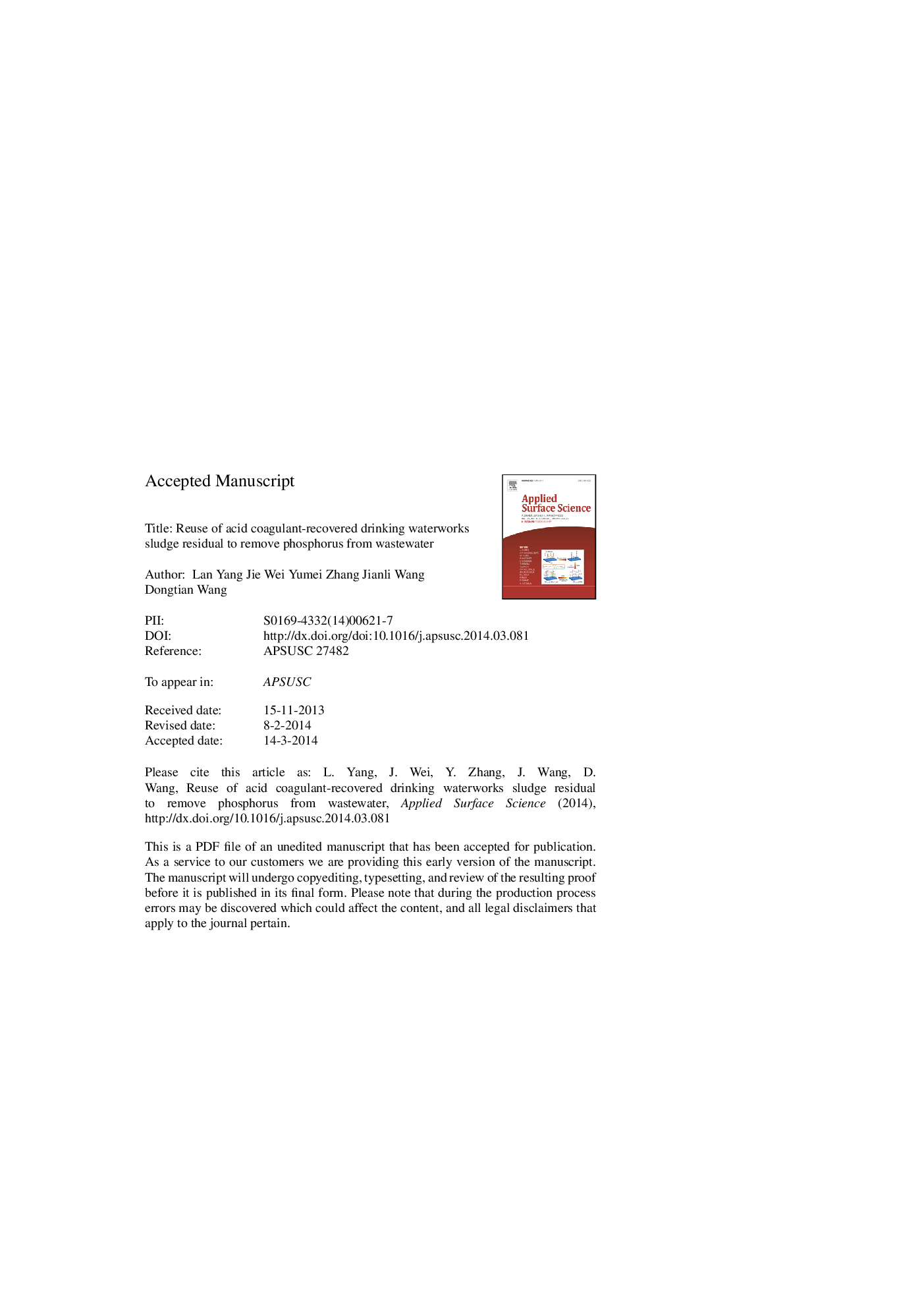| کد مقاله | کد نشریه | سال انتشار | مقاله انگلیسی | نسخه تمام متن |
|---|---|---|---|---|
| 5350307 | 1503659 | 2014 | 47 صفحه PDF | دانلود رایگان |
عنوان انگلیسی مقاله ISI
Reuse of acid coagulant-recovered drinking waterworks sludge residual to remove phosphorus from wastewater
ترجمه فارسی عنوان
استفاده مجدد از مخلوط لجن آب آشامیدنی کافئین، برای حذف فسفر از فاضلاب
دانلود مقاله + سفارش ترجمه
دانلود مقاله ISI انگلیسی
رایگان برای ایرانیان
کلمات کلیدی
لجن آب آشامیدنی آشامیدنی، بازیافت کواگولانت، حذف فسفر، بارش، جذب،
موضوعات مرتبط
مهندسی و علوم پایه
شیمی
شیمی تئوریک و عملی
چکیده انگلیسی
Acid coagulant-recovered drinking waterworks sludge residual (DWSR) is a waste product from drinking waterworks sludge (DWS) treatment with acid for coagulant recovery. In this study, we evaluated DWSR as a potential phosphorus (P) removing material in wastewater treatment by conducting a series of batch and semi-continuous tests. Batch tests were carried out to study the effects of pH, initial concentration, and sludge dose on P removal. Batch test results showed that the P removal efficiency of DWSR was highly dependent on pH. Calcinated DWSR (C-DWSR) performed better in P removal than DWSR due to its higher pH. At an optimum initial pH value of 5-6 and a sludge dose of 10 g/L, the P removal rates of DWSR and DWS decreased from 99% and 93% to 84% and 14%, respectively, and the specific P uptake of DWSR and DWS increased from 0.19 and 0.19 mg P/g to 33.60 and 5.72 mg P/g, respectively, when the initial concentration was increased from 2 to 400 mg/L. The effective minimum sludge doses of DWSR and DWS were 0.5 g/L and 10 g/L, respectively, when the P removal rates of 90% were obtained at an initial concentration of 10 mg/L. Results from semi-continuous test indicated that P removal rates over 99% were quickly achieved for both synthetic and actual wastewater (lake water and domestic sewage). These rates could be maintained over a certain time under a certain operational conditions including sludge dose, feed flow, and initial concentration. The physicochemical properties analysis results showed that the contents of aluminum (Al) and iron (Fe) in DWSR were reduced by 50% and 70%, respectively, compared with DWS. The insoluble Al and Fe hydroxide in DWS converted into soluble Al and Fe in DWSR. Metal leaching test results revealed that little soluble Al and Fe remained in effluent when DWSR was used for P removal. We deduced that chemical precipitation might be the major action for P removal by DWSR and that adsorption played only a marginal role.
ناشر
Database: Elsevier - ScienceDirect (ساینس دایرکت)
Journal: Applied Surface Science - Volume 305, 30 June 2014, Pages 337-346
Journal: Applied Surface Science - Volume 305, 30 June 2014, Pages 337-346
نویسندگان
Lan Yang, Jie Wei, Yumei Zhang, Jianli Wang, Dongtian Wang,
